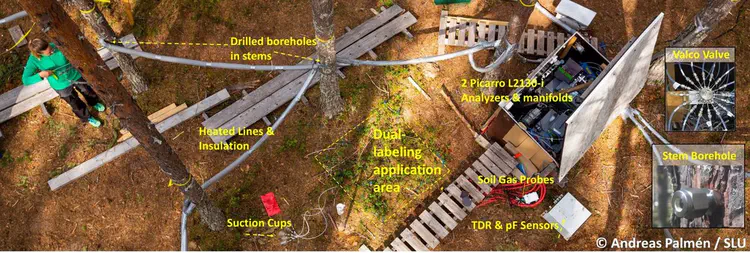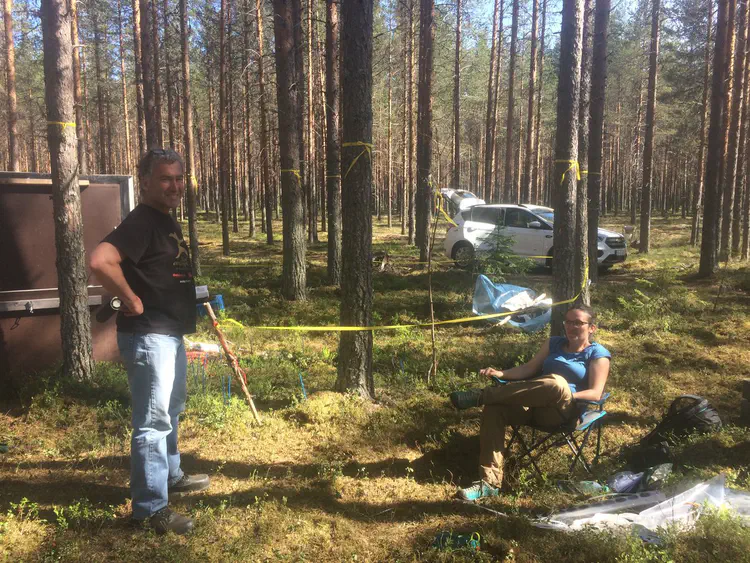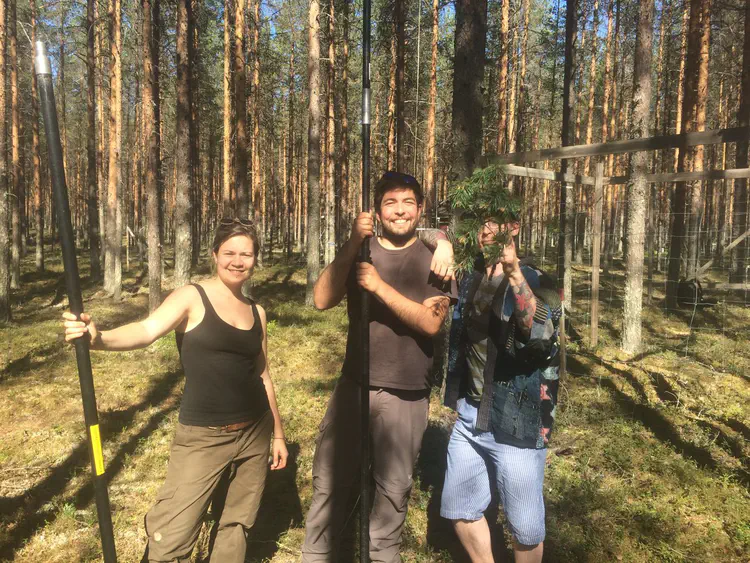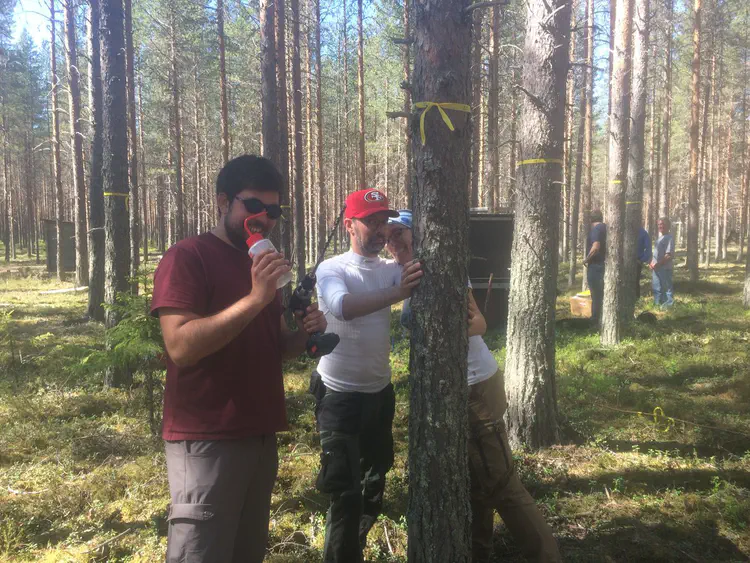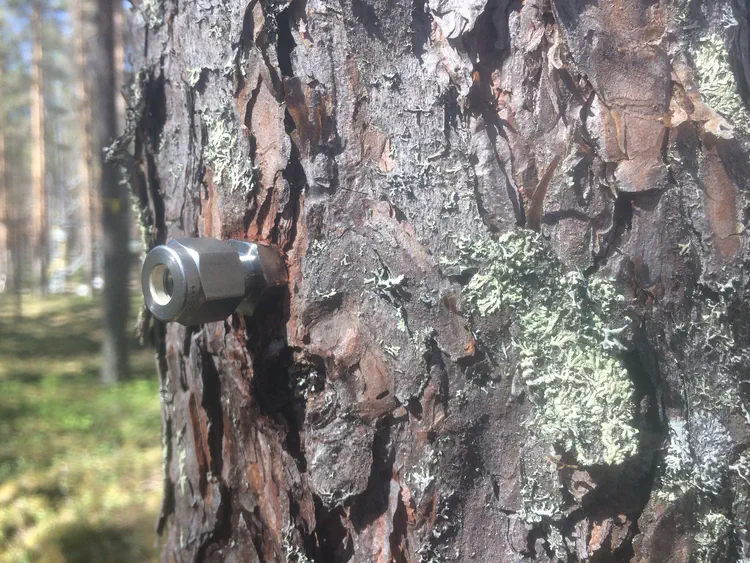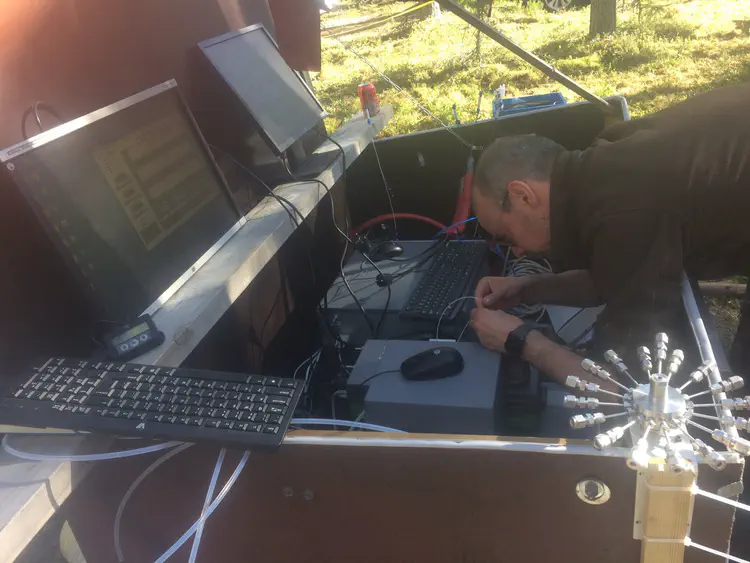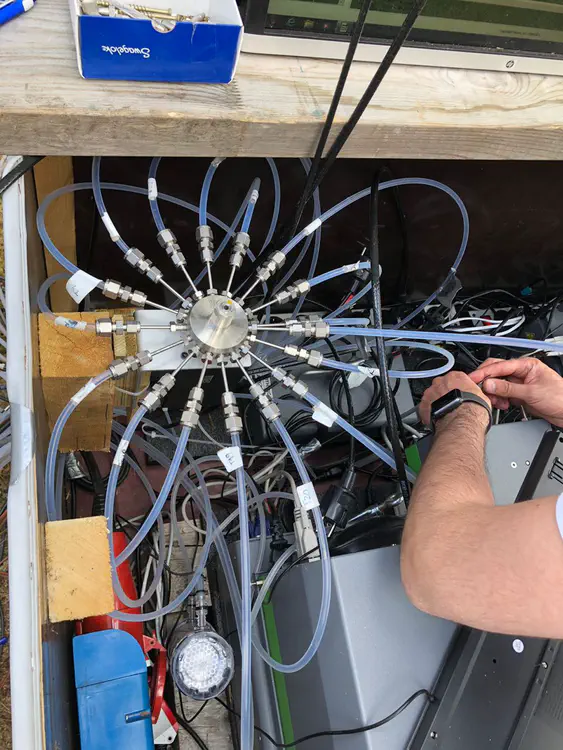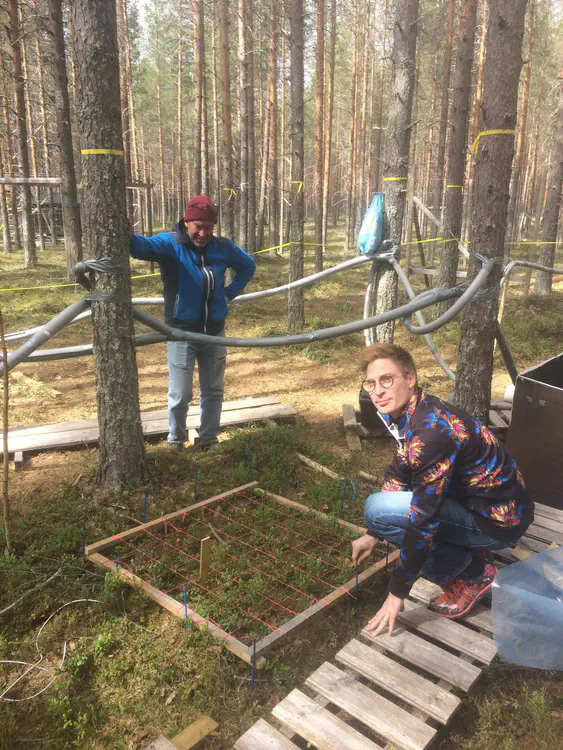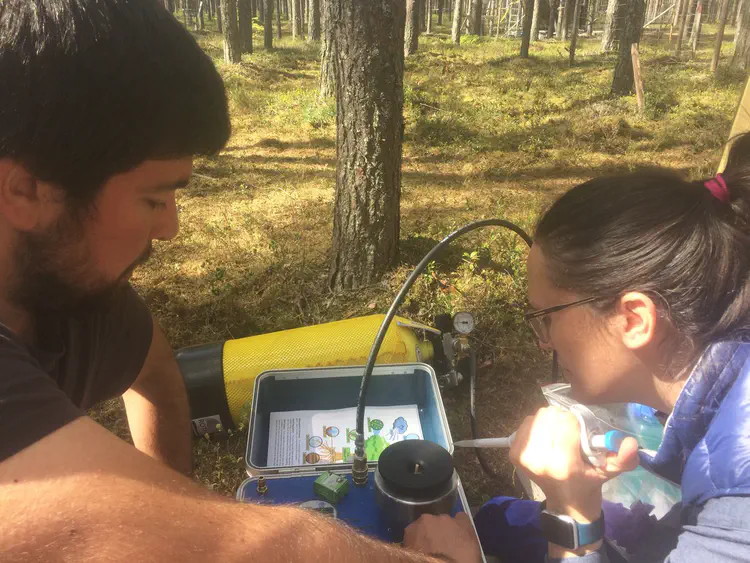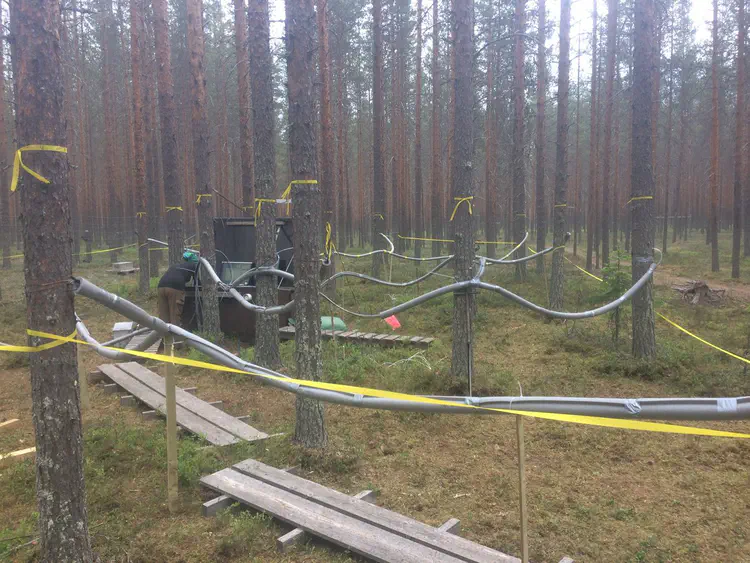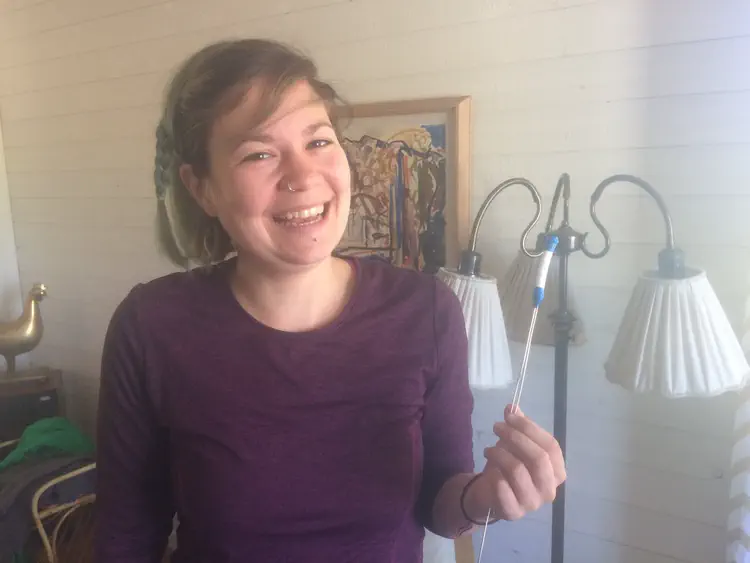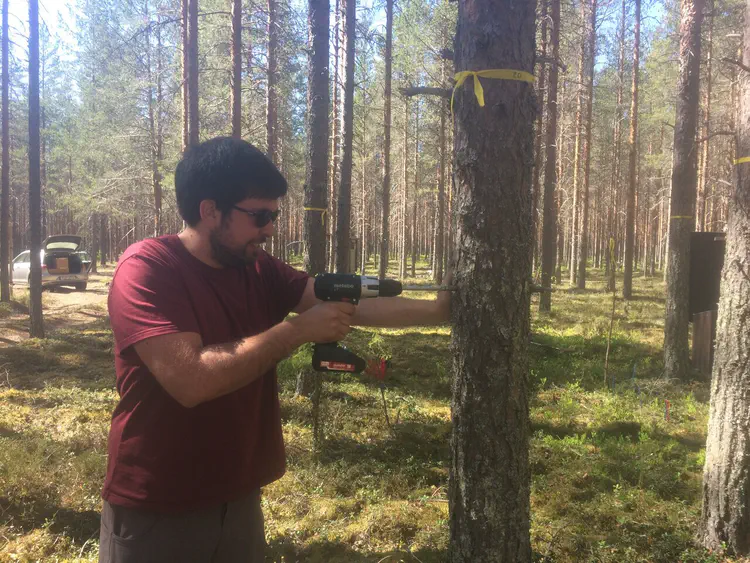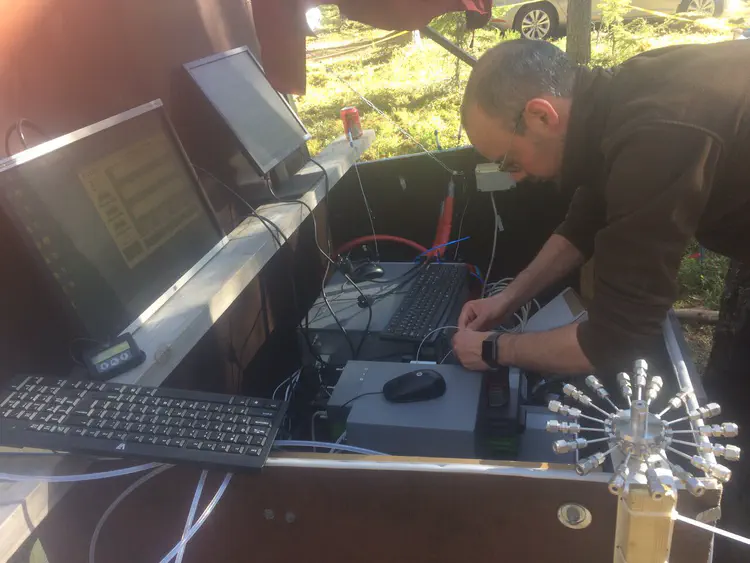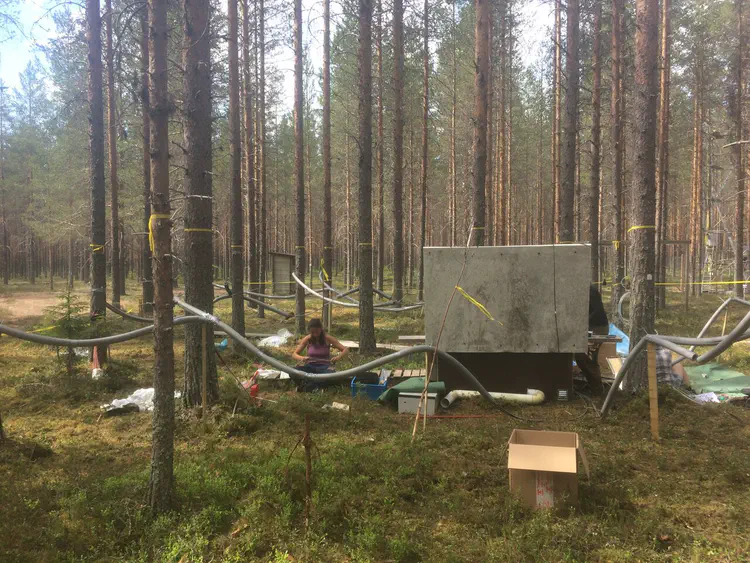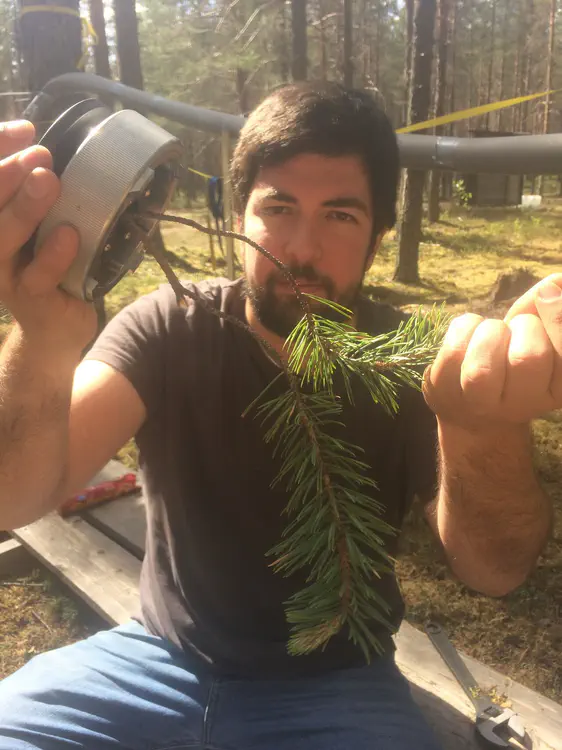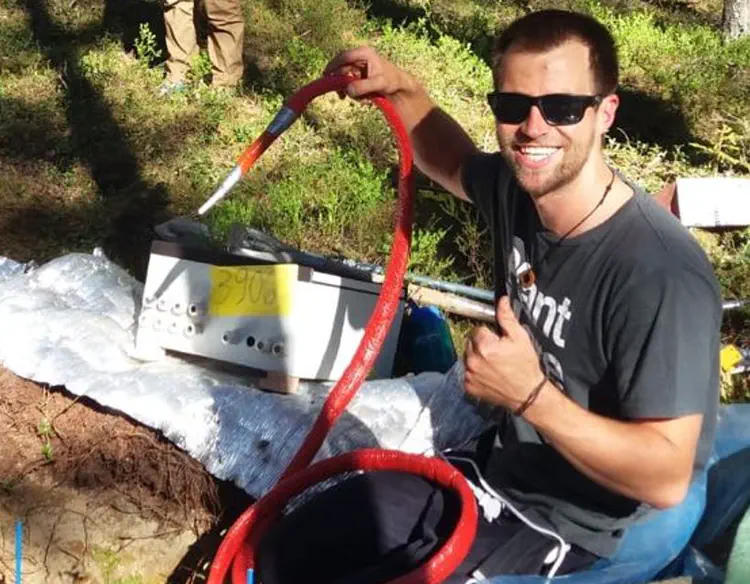Tracing vertical and lateral root water uptake of Scots Pine in northern Sweden with the stem borehole method
‘Hey, why don’t you guys come up to Sweden and we pop out an experiment together?’

In September 2017, three researchers came together to celebrate the official award of my Freigeist Fellowship in the castle of Herrenhausen in Hannover. The next morning, we had a casual breakfast at my place and one of the three said ‘Hey, why don’t you guys come up to Sweden and we pop out an experiment together?’
That person happened to be John Marshall, with the other two being Maren Dubbert and me. I have often spoken with John about the method he invented for insitu monitoring of water stable isotopes in trees, but never really tried in a ‘real’ experiment. An idea was born, and a little thing turned into a huge experiment with a first publication of John’s PhD student Noelia Saavedra on the way. We established an extremely extended field setup consisting of:
- 15 trees in mature Pinus sylvestris forest, 1 stem borehole each
- Soil moisture, pF, soil temp. at five depths: 0.1m, 0.3m, 0.5m, 0.7m, 1m
- Soil gas probes at eight depths: above plus 0.05m, 0.15m, 0.2m
- Four isotope standards in bags with soil gas probes
- Equilibrated water vapor was directed into two different Picarro L2130-i water isotope analyzers
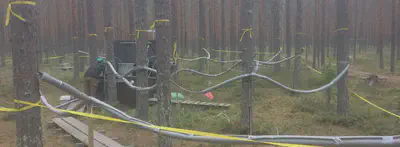
The stem borehole method is an idea of John D. Marshall – when he first told me about, I was stoked, because I have been long thinking about how to measure tree water isotopes insitu in an elegant way. It is using a small borehole drilled through the stem of the tree (yes, it sounds crazy, but it does indeed not hurt the tree extensively).
At one or both outlets, Swagelok connections are attached and connected to a manifold system and a Picarro water isotope analyzer. This way, dry air can be pushed through the stem from one side, then equilibrates with the water vapor inside the tree and drawn into the Picarro. Sounds easy, but there are a lot of precautions to follow (check our upcoming publications). This was really a tremendous amount of work, but we had so much fun that we didn’t even mind. John organized us a typical Swedish wooden house and we had plenty of fun. As another bonus, there was the Swindeln River just 50 m behind the house, where we could refresh every evening in the recently melted glacier-water.
During this one month (the experiment continued until August though), even some more researchers and friends showed up in the house an helped us a lot: Paul Koeniger (BGR), Matthias Cuntz (INRA) and David Dubbert (FU Berlin).
As things are being prepared for publication at this point, I don’t want to comment too much on the results but let me say at least this: The method does work, even for longer time periods. ;) Check for upcoming talks, Posters and publications for more information on the method.
Down below some pictures from the field! We are happy about comments or requests!
Matthias
